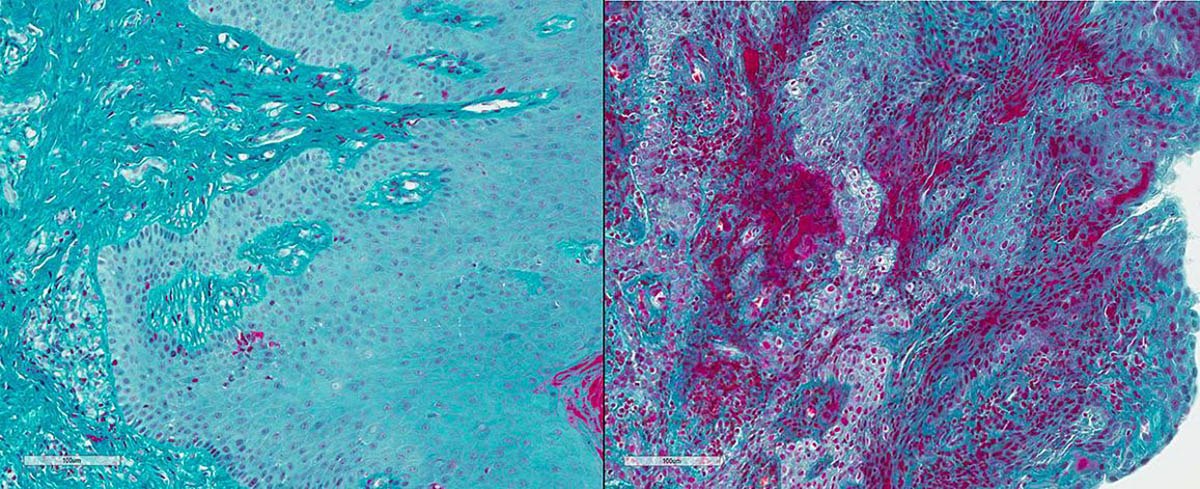Disarming a blood-clotting protein prevents gum disease in mice
Human and animal study offers insight into treating periodontal disease and other inflammatory disorders
Blocking function of a blood-clotting protein prevented bone loss from periodontal (gum) disease in mice, according to research led by scientists at the National Institute of Dental and Craniofacial Research (NIDCR), part of the National Institutes of Health. Drawing on animal and human data, the researchers found that buildup of the protein, called fibrin, triggers an overactive immune response that damages the gums and underlying bone. The study, which was published in Science, suggests that suppressing abnormal fibrin activity could hold promise for preventing or treating periodontal disease, as well as other inflammatory disorders marked by fibrin buildup, including arthritis and multiple sclerosis.
Periodontal disease affects nearly half of Americans over age 30, and 70% of those 65 and older. It is a bacterial infection of the tissues supporting the teeth. In its early stages, periodontal disease causes redness and swelling (inflammation) of the gums. In advanced stages, called periodontitis, the underlying bone becomes damaged, leading to tooth loss. While scientists have known that periodontitis is driven in part by an exaggerated immune cell response, until now, it was unclear what triggered the response, and how it caused tissue and bone damage.
”Severe periodontal disease can lead to tooth loss and remains a barrier to productivity and quality of life for far too many Americans, especially those lacking adequate access to dental care,” said NIDCR Director Rena D’Souza, D.D.S., Ph.D. “By providing the most comprehensive picture yet of the underlying mechanisms of periodontal disease, this study brings us closer to more effective methods for prevention and treatment.”

Compared to healthy volunteers (left), gum tissue from people with severe periodontal disease (right) shows high levels of fibrin (magenta).
This page was last updated on Friday, January 21, 2022